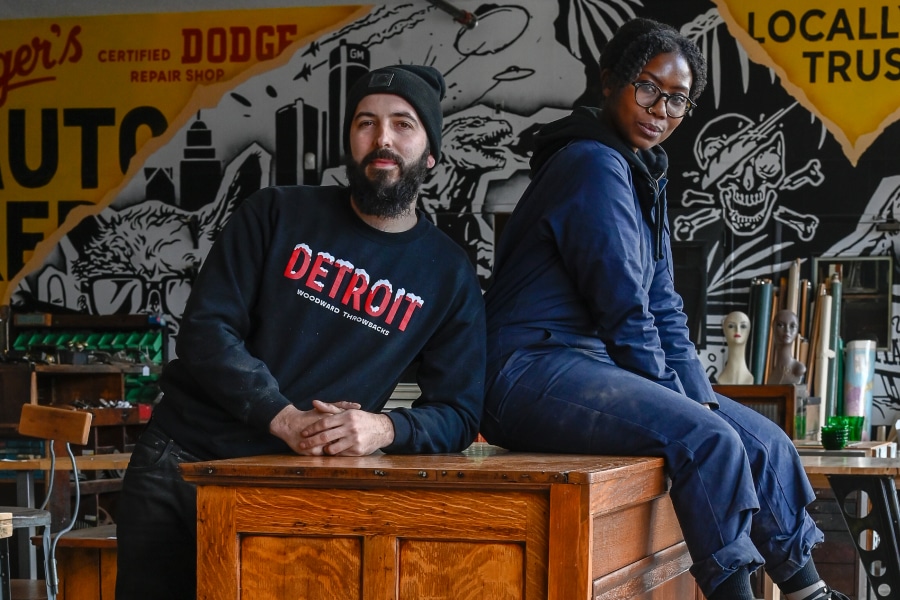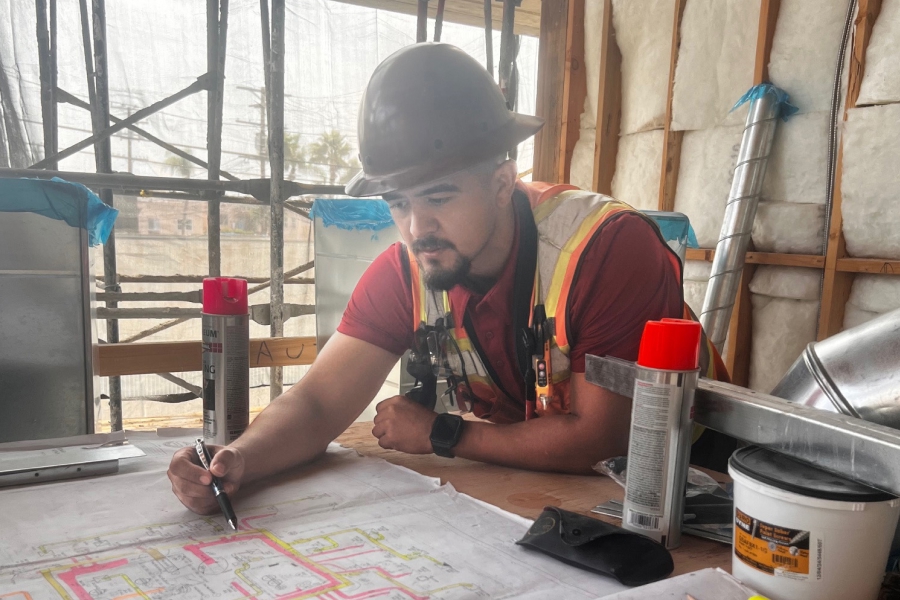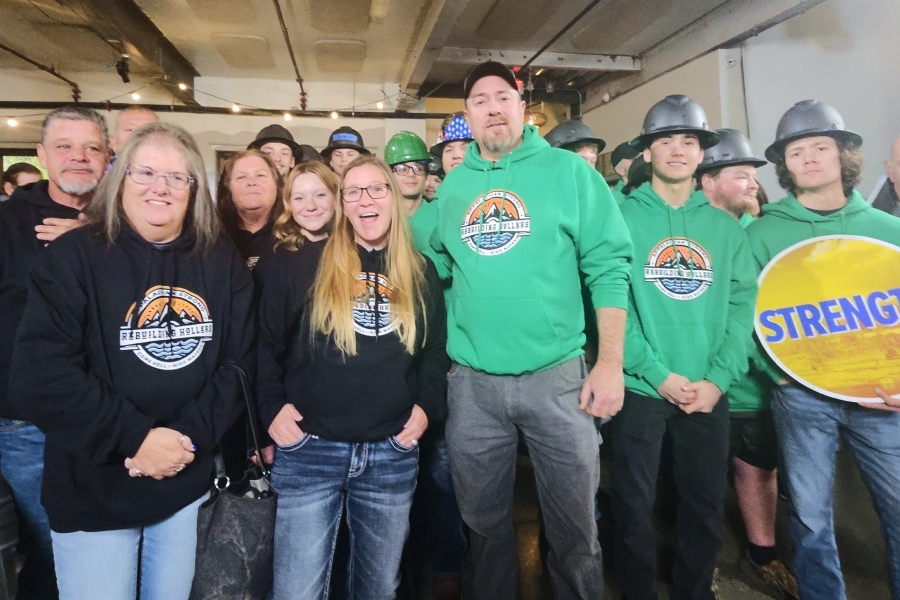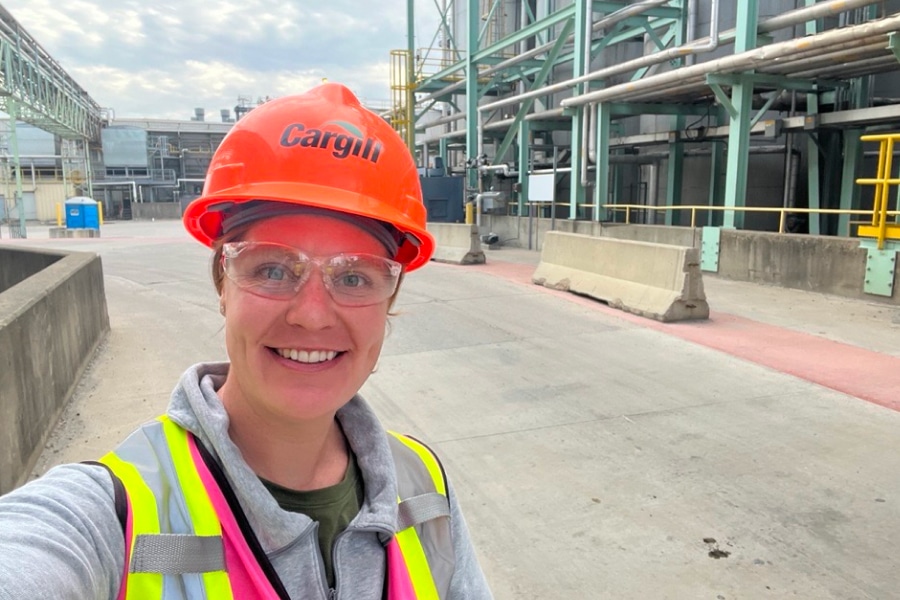Detroit has always been famous for its stunning and architecturally significant buildings.
Between the 1910s and 1940s, the city’s millionaires created an architectural legacy that was rich in art deco splendor. But as local manufacturing began to decline on the heels of offshoring, those beautiful buildings declined, too.
By the time Bo Shepherd and Kyle Dubay moved to the city in 2014, seeing discarded scraps of once-majestic structures on bike rides through the city was a common sight. Determined to reclaim the architectural heritage of the city, the duo began creating furniture out of these materials—and Woodward Throwbacks was born.
Starting from scratch
“Neither Bo nor I have a proper background in furniture design or building,” Shepherd said. “I was fortunate to have a woodshop class in high school, where I learned a decent amount about basic woodworking. And Bo grew up working with her dad on construction sites. So we both had early knowledge of working with tools, and both have a creative sense.”
What they lacked in professional knowledge, however, they more than made up for with enthusiasm. Inspired by backgrounds in woodworking, Dubay and Shepherd first turned to creating their own furniture out of necessity.
“We started WT as a way to furnish our own homes,” Shepherd said. “We were just out of college and didn’t have much money, so we figured we could make something with the materials we were finding on the streets.”
Fortunately, there was no lack of materials waiting to be reclaimed. “At that moment in time, illegal dumping was a big issue in the city, and we would find it all over the city as we were biking around,” Shepherd said. “So we used those dumping sites as our hardware store, and would create small pieces of furniture and decor for our houses. That was 10 years ago.”

The Woodward Throwbacks business has evolved considerably since. “Now we still use reclaimed materials but the operation is a bit more sophisticated,” Shepherd said. “We operated in an old 24,000 square-foot-car dealership that is our showroom, warehouse and workshop all in one. And we are designing full house interiors as well as building custom millwork and furniture.”
Capturing a city
For both Shepherd and Dubay, honoring the grandeur of Detroit’s architectural history became a subject of fascination.
“Bo and I didn’t grow up here so we weren’t as aware of the architecture until we moved here,” Shepherd said, “but both of us were immediately drawn to the city because of the architecture. It’s such a beautiful city, and the buildings here are amazing in their detail and craftsmanship.”
By transforming forgotten architectural materials into new pieces, Shepherd hopes to honor those roots. “It’s a great feeling giving new life to the materials we find in these buildings around the city,” Shepherd said. “Lots of times, if it wasn’t for us the materials would be getting thrown away. But it’s also a great creative experience. We are generally using materials in ways they weren’t intended to be used. So it’s almost as if our brains have been trained to think about what else could this material be transformed into. It’s always a challenge, but it’s also super rewarding.”
As they’ve grown, the WT team often organizes its furniture releases into collections that honor the buildings that their materials were sourced from.
“We just launched a collection made with materials salvaged from the Michigan Central Station,” Shepherd said. “For the last 40 years, the building had sat in disrepair, and was a cultural landmark.”
The duo opted to honor that history in the design decisions they made. “We tried to keep the materials a little rawer and more unpolished, keeping materials with that distressed and honest wear,” Shepherd said. “This building, and the city as a whole, has been through some tough times. We wanted those imperfections and scars to shine as opposed to polishing them. We think it made for a really cool finish as well.”

Beyond the aesthetics, Shepherd said that creating a greener way to build new pieces is central to what inspires them. “Sustainability is at the core of what we do,” he said. “It’s not something we advertise, but the whole business is about saving materials and finding new use for them. It’s become almost our life’s mission to find and save these materials. It’s important to us because being on the inside we see how much gets thrown away—it’s really mind-blowing the amount of waste in the construction industry.”
Just as important is honoring the rarity and beauty of the materials they find. “Saving some of these materials that would be hard to replicate today is almost as important, whether that’s hand-carved railings from the 1800s or Mankato gold limestone. It’s so important for us to save these treasures from being thrown away.”
From reclaiming materials to building spaces
Shepherd explained that the team’s interest in furniture has led to a passion for interior design, understanding the way that well-selected pieces can bring an architect’s vision to life.
“We feel that furniture can really amplify a space,” he said. “The furniture has to complement the architecture, too. It can really make or break the overall design of a space if they don’t speak together.”
Perhaps this is why, as Shepherd said, “The future of WT seems to be more in the interior design space. Bo and I have developed about 5-6 properties over the last 10 years. And over the last year or so we started designing spaces for clients. At the moment we have eight interior design jobs throughout the state of Michigan. As well as doing the interior design work, we are also building most of the millwork for these spaces.”
For Shepherd and Dubay, this evolution feels like a logical next step. “It’s really a natural progression for the business and us as designers and artists,” Shepherd said. “We love working on a whole room or house scope, as opposed to just one piece of furniture. And it also allows us to save so much more material and to reuse that material in some really interesting and beautiful ways.”













